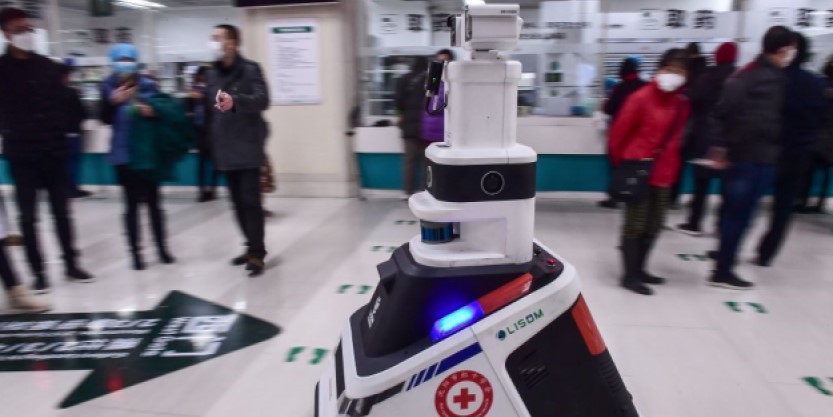How robots in China are helping make buildings safer
Automation and proptech have been in focus during the COVID-19 outbreak
As the world faces the coronavirus pandemic, eyes have turned to China for any lessons to glean from the country’s experience.
Technology, it turns out, was front and center when it came to making buildings safer. Tools that limited human contact – from apps for building entry, to robots spraying disinfectant in hospitals – were one area that helped manage the places where people work, shop and live.
“New technology means modern buildings require less reliance on people to maintain services during this critical time than ever before,” says Eric Lee, Head of Operations, Property and Asset Management, JLL Greater China. “This proved to be a real benefit when it came to implementing virus prevention measures such as social distancing and movement monitoring.”
Proptech, robots in focus
Many of the technologies used during the outbreak in China weren’t new. For years China has been an early adopter in the rapidly growing sector of “proptech,” which includes apps, the Internet of Things (IoT), sensors and robots to streamline property management.
But during the COVID-19 outbreak, the benefits moved into much sharper focus.
At one building in Shanghai, robots were used to disinfect the premises. The robots could automatically calculate routes and clean every corner, relieving the burden on cleaners and preventing infections.
Such robots were also used in hospitals in the outbreak epicentre of Wuhan. Capable of autonomous patrol while avoiding obstacles, they sprayed disinfectant, used thermal imaging cameras to measure peoples’ temperatures, and could even recognize whether or not someone was wearing a mask.
It wasn’t just physical robots helping reduce the spread. At Shanghai Baoland Plaza, a Grade-A office building in the city, IoT connectivity helped reduce manpower to inspect facilities and equipment. The building installed Command Centre, a platform offered by JLL, to obtain real-time data from equipment and facilities through a building’s current systems and employ wireless IoT sensors to monitor air quality, temperature, humidity, and energy consumption.
Building hardware
Automated features to prevent outbreaks, and reduce pressure on staff if they do occur, can be built into the hardware of new projects, and in some cases can also be retrofitted to existing buildings.
While studies show that COVID-19 spreads through droplets from the nose or mouth, rather than the air, “the airborne nature of viruses in general makes fresh air and return-air systems an obvious starting point,” says Steve Chan, Head of Engineering and Operations Solutions, Property and Asset Management at JLL Greater China. “By installing design features such as windows that can open at curtain walls to increase fresh air flow, as well as disinfecting the air being circulated, the spread of airborne viruses can be reduced.”
As physical human contact is seen as a major transmission factor, landlords also sought to include contact-free measures. These included tech-forward ways to do simple tasks like opening a door or calling an elevator with facial recognition, or Bluetooth and dynamic QR code systems installed on mobile phones.
“This goes way beyond more typical automatic disinfection devices, increased hand-cleaning points, and toilet facilities upgrades to help in the fight against contagions,” Chan says.
While robotic and software solutions can take weeks to set up, tackling property management needs can be worked out much more quickly, notes Lee.
Updating emergency plans and holding staff training to prepare for such scenarios will facilitate quicker responses in emergencies. Meanwhile, the procurement of resources such as masks, gloves, hand sanitizer, and alcohol disinfectant, along with ensuring the reliability of supply chains for such items, will also be an area of focus.
“Lessons from China showed that a more proactive approach in preparing for potential future outbreaks is critical,” he says. “Companies are taking a forward-thinking approach, where it’s not just about protecting the occupants of buildings now, but adopting measures to protect against future outbreaks.”




